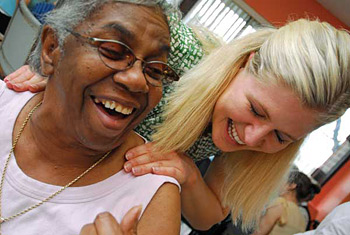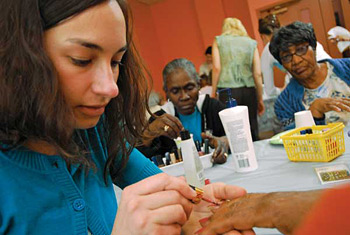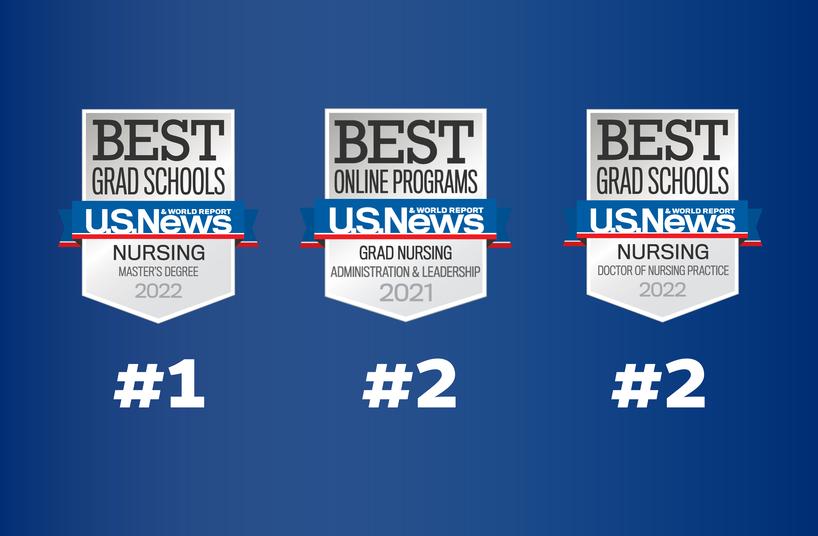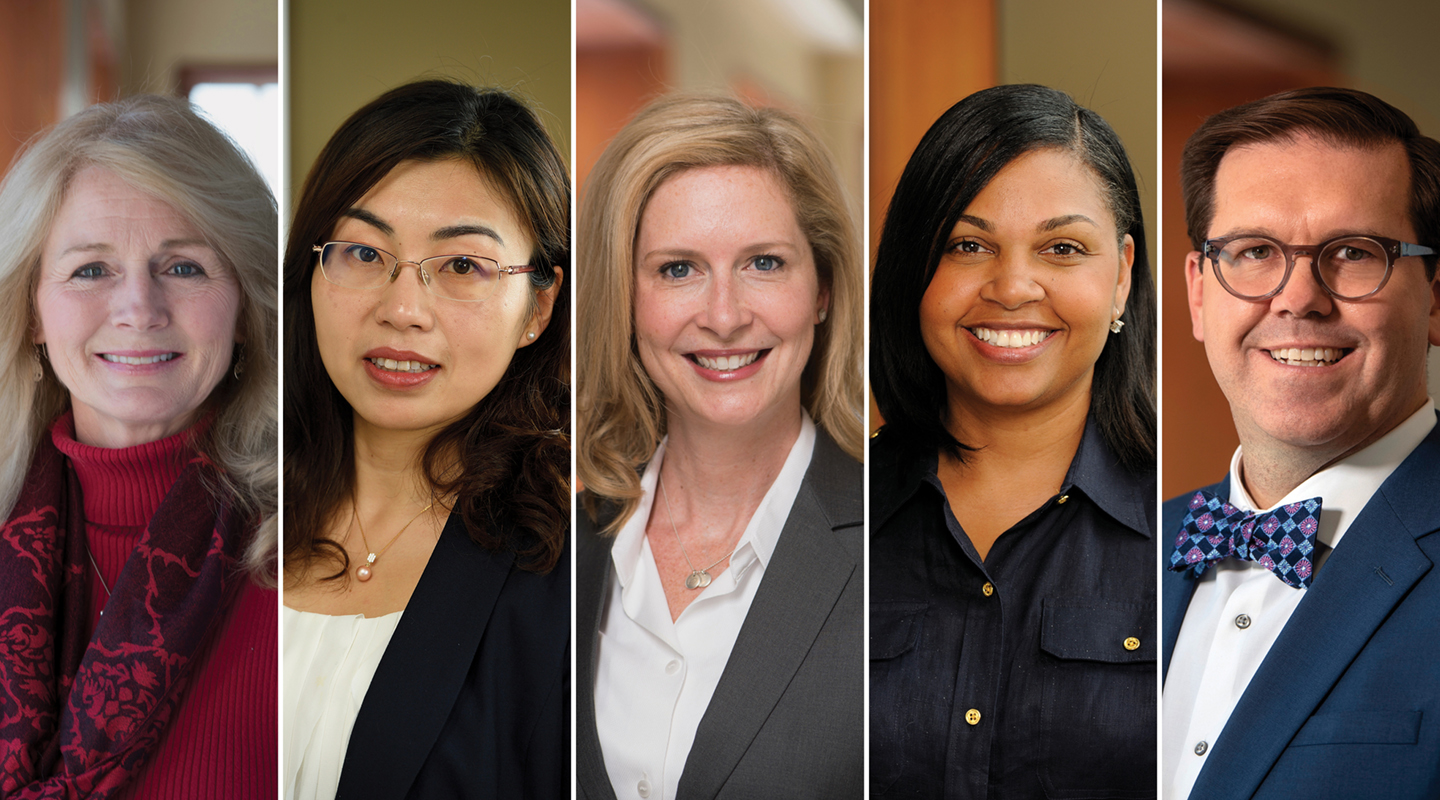By Jonathan Eichberger
A community health nurse is not made by classroom learning alone. Textbooks, lectures, and written tests help prepare students for working with patients, but there is no substitute for hands-on experience. At the Johns Hopkins School of Nursing (JHUSON), students are sharing their knowledge with Baltimore residents-and learning valuable lessons at the same time.

Stress Management for the Homeless
In March, Community Public Health nursing students received funds from the Johns Hopkins Nurses’ Alumni Association (JHNAA) to host a stress management workshop at the Hannah More Shelter, a transitional housing facility.
Students provided hand massages and manicures, talked to the residents about types of stress and coping strategies, and presented evidence-based examples of stress relievers including relaxing music, yoga, and guided meditation. The residents received prizes such as journals, stress balls, and small bottles of lotion.
Katharine Taylor ’08 recalls a touching moment in which one woman acknowledged that “after getting to know her fellow residents, she felt closer to them and more supported by them than she had ever felt in her own family. Several of the women began tearing up at this point and a box of tissues was passed around.”
 Spa Day for the Elderly
Spa Day for the Elderly
In April the Geriatric Interest Group, comprised of Hopkins students from the schools of Nursing, Medicine, and Public Health, collaborated with the Isaiah Wellness Center at the Apostolic Towers, a housing complex for low-income older adults, to host a Spa Day for its residents. The event featured seated massages, nail manicures, an exercise session (tai-chi and stretching), and a healthy lunch for all who attended.
According to Callie Hermann ’09, Spa Day “provided opportunities for relationships that are beneficial for students and the residents at Apostolic Towers.” The benefit to students? Lessons that can’t be covered in the classroom: “Listening to people share their simple (yet often overlooked) expressions of gratitude put my life’s ‘problems’ and ‘stresses’ into perspective,” she adds.
Heart Health Education for Amish Children
Also using a JHNAA grant, nursing students purchased a human heart model to teach area Amish school children about heart health in May. Because older Amish people have a high risk of heart disease due to their diet, the nursing students spent time teaching Amish children about the heart’s role in the human body and the warning signs for heart attack and stroke.
“The best thing about teaching children is seeing that ‘ah-ha!’ moment in their eyes,” said student Kristine Lee, accelerated ’09. “I remember kneeling down next to the first boy who was probably no more than six years old. I asked him to point to his heart. Then I put the ear pieces of the stethoscope in his ears and asked, ‘Can you hear your heart?’ His eyes widened with a smile, he nodded yes.”
 A Whole Different World
A Whole Different World No. 1 Among Nurses, Four Times In a Row
No. 1 Among Nurses, Four Times In a Row 2020 FAAN Inductees
2020 FAAN Inductees Nurses Weigh In on the Doctorate of Nursing Practice
Nurses Weigh In on the Doctorate of Nursing Practice







